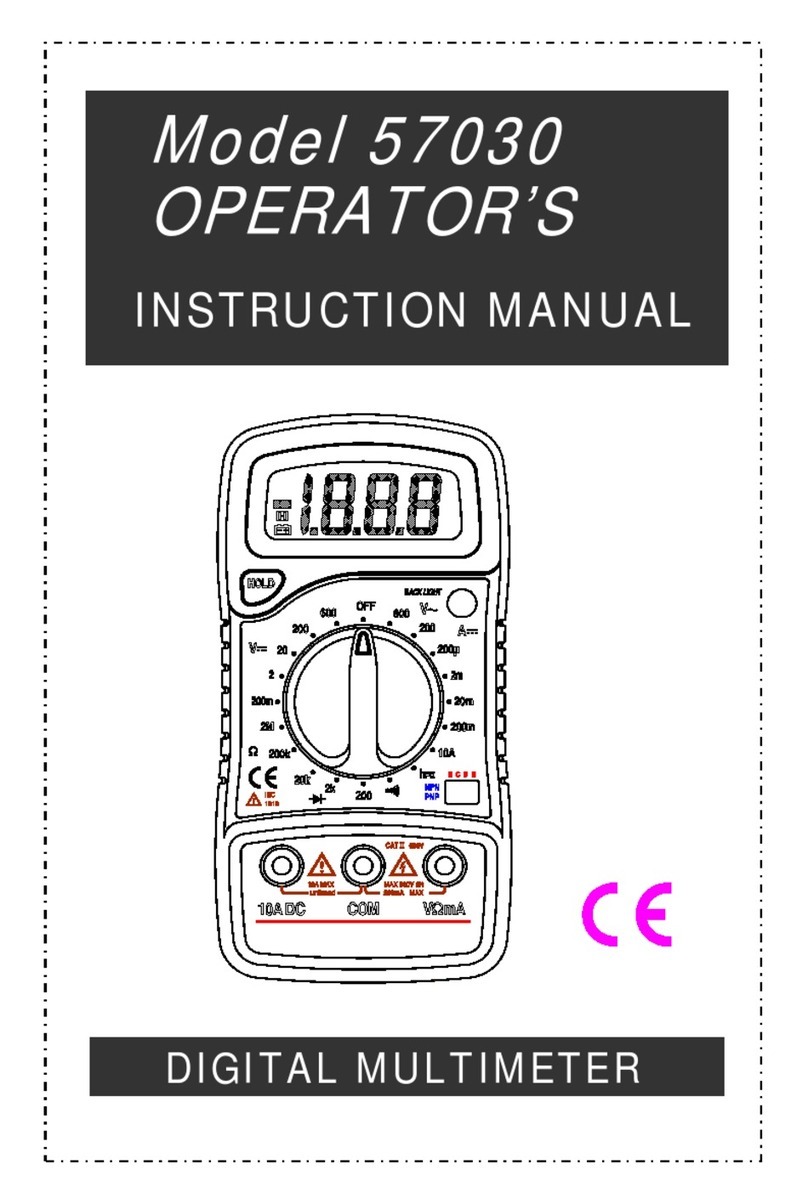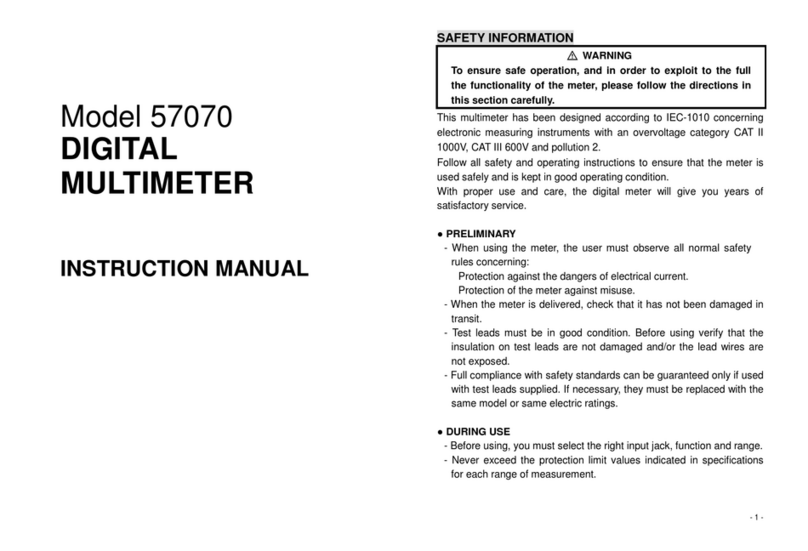
OPERATION
Before taking any measurements, read the Safety Information
Section.
Always examine the instrument for damage, contamination
(excessive dirt, grease, etc.) and defects. Examine the test leads for
cracked or frayed insulation. If any abnormal conditions exist do
not attempt to make any measurements.
AC/DC OR OHM/DIODE/CONTINUITY OR Hz/% SELECTING
BUTTON:
Push this button to select AC/DC current measuring function
when the function switch is set at µA, mA, and A positions.
Push this button to select OHM/DIODE/CONTINUITY
measuring function when the function switch is set at
OHM/DIODE/ CONTINUITY position.
Push this button to select Hz/% (Duty Cycle) measuring function
when function switch is set at Hz/% Duty Cycle position.
RANGE CONTROL BUTTON:
This is the manual range setting switch.
When power is first switched on, auto-ranging is automatically
selected.
Whenever this switch is pressed, manual range setting is possible.
Pressing the button once switches to the manual ranging mode and
RANGE mark is displayed.
Subsequent Button
When the highest range is reached, the next press returns the
instrument to its lowest range. To cancel manual range, hold the
range hold switch in for more than 1 second and the RANGE
mark disappears and the auto-ranging function is restored (Manual
range except capacitance and frequency).






























